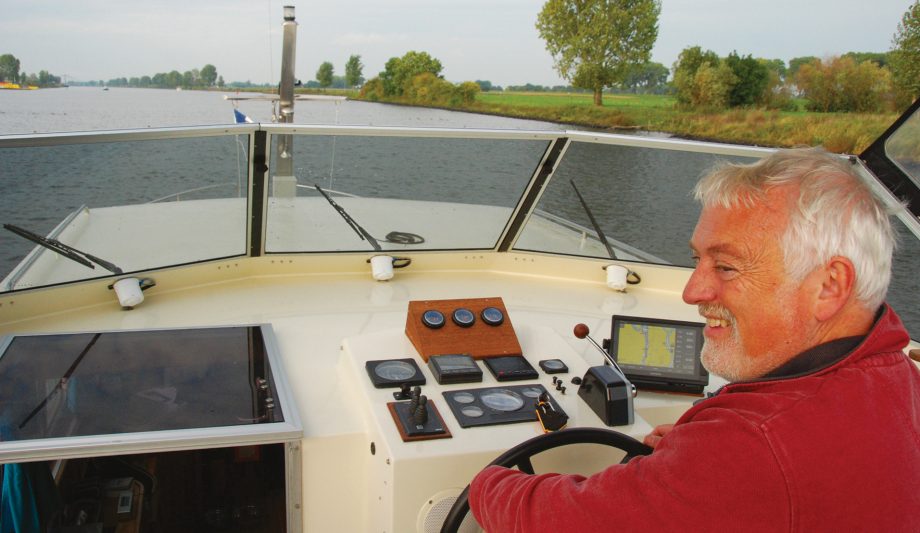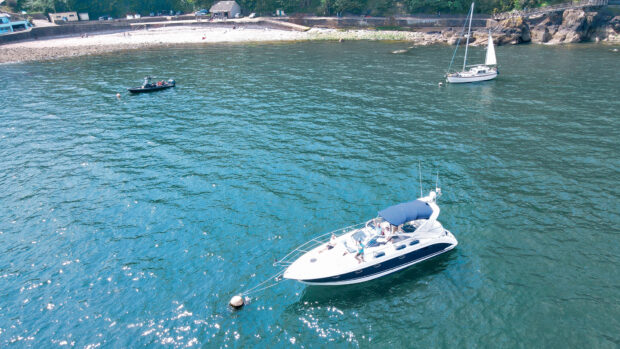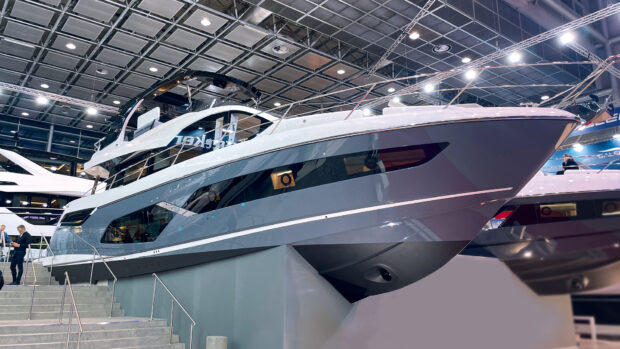Former yachties Beryl Chalmers and Simon Palmer explain why they sold their beloved sailing yacht in favour of a spacious Dutch steel motor boat.
Having been committed sailors for more than 30 years and the current owners of a beautiful Dufour sailing yacht, we never thought owning a motor boat would appeal to us. But after a couple of frustrating summers with either no wind or too much wind and the occasional ‘mechanical’ failure of our own bodies, we felt it might be time to at least consider it.
The final straw came in 2018 after a particularly gruelling passage across the North Sea. It took us 11 days to sail from West Mersea, Essex, to Holland in the height of our so-called summer – a passage that would normally take us 11 hours. Eleven days of rough passages, rain, wind and heavy swells. It was pure misery.
Even the dog had had enough and was now showing considerable reluctance to ever go aboard again. We decided there and then it was time for a change.

Even Marley the dog is happier on board their new motor boat
By now we were in the south of Holland and getting fed up with waiting for bridges to open. Our mast gave us an air draught of around 60ft, which effectively meant that we were bridge-locked from many of the nicer parts of the country, unless we went the long way round via the main waterways where we’d be sharing the water with massive commercial barges. So we passed the time looking at Dutch motor cruisers instead.
It was like learning a whole new language. We were used to a comfortable and sea-kindly Dufour 38 Classic – a straightforward production boat with basic systems and no bells and whistles. That’s what we understood and what we liked.
Now, all of a sudden, we were having to get our heads round features like hydraulic steering, stern and bow thrusters, engines with three times the horsepower of the Dufour’s and even electric toilets. Where should we even start?
Article continues below…

Best boats under £100,000 from the secondhand market

Linssen Grand Sturdy 410 AC buyers’ guide: The archetypal Dutch steel boat
We decided that the engine/s were our first priority. Should we go twin or single? We had been advised by previous sail to power converts that two engines meant twice the potential for things to go wrong. And let’s face it, when it comes to boats, if it can go wrong, it usually does.
Two engines also meant even more horsepower and fuel costs. Did we really want to let ourselves in for that? We were looking for an easier life pootling about the waterways of Europe not charging around at speed. But what if that one engine failed? There wouldn’t be any sails to get us out of trouble.
The hunt begins
Then someone with a twin-engined cruiser mentioned he had got into trouble trying to go alongside a bank for a lunch stop. The exposed propeller nearest to the bank hit the bottom, bent the propshaft and earned the skipper a €3,000 repair bill. That settled it, with a single engine the propeller would be central, deeper and protected by a keel.

Beryl and Simon’s former boat was a Dufour 38
However, without the get-out-of-jail card of a second engine or a mast and sails, we decided we’d look for one with low hours – not because marine diesel engines are unreliable but because the ancillaries that go with them sometimes give up long before the engines do. Maybe we were being too pessimistic but erring on the side of caution felt like the right decision for us.
We noticed that many of the motor boats we looked at had two helm positions – one inside and one outside. Was that really necessary? Like twin engines, it was twice the number of things to go wrong and having been used to getting cold, wet and miserable on a sailing boat, we decided a single helm outside with a good set of canopies would be fine.
It also meant there would be more space in the saloon without a second helm position eating up a prime chunk of it. Besides a lot of inside helms had limited rear visibility, so we weren’t even sure we’d even use it very often.

Former yachtswoman Beryl now feels just as comfortable at the helm of a motor boat
Air draught was another big consideration. As we had made the decision to lose the mast, we didn’t then want to be restricted by the height of a flybridge instead – so no top deck and no chunky radar arch. A small stainless steel mast for the top light, VHF aerial and courtesy flags that could easily be lowered on a pin was all we wanted.
That gave us a maximum height to the top of the windscreen (another new feature for us) of 2.65m or 3.65m if we included the folding bimini hoops and helm canopy.
Room for all
The next big box to tick on our list was accommodation. Most of the boats we looked at of a similar length to the Dufour had one good double cabin and a small forward cabin but only one heads. That was no good for us. We love having friends and family coming to stay on our boat.

A large galley and cosy saloon makes their new 11.6m Marhen ideal for exploring the waterways of South Holland
We also wanted a roomy saloon and large cockpit. A good galley and dinette were also on our tick list but not deal breakers. Budget was obviously pretty important too but, as there were hundreds of boats on the market in Holland, there were plenty to choose from.
Our first viewing was of a beautiful Babro 1060. It was in exceptional condition and ticked every box except for the second heads. We looked at it on a Friday afternoon. By the following morning it had sold. We then looked at another Babro but again, that sold within a day or so of us looking.
It seemed to be a sellers’ market so we decided we should get the Dufour ready to sell before we started looking seriously. That way we would be in a position to make a quick offer once we’d found the right boat.
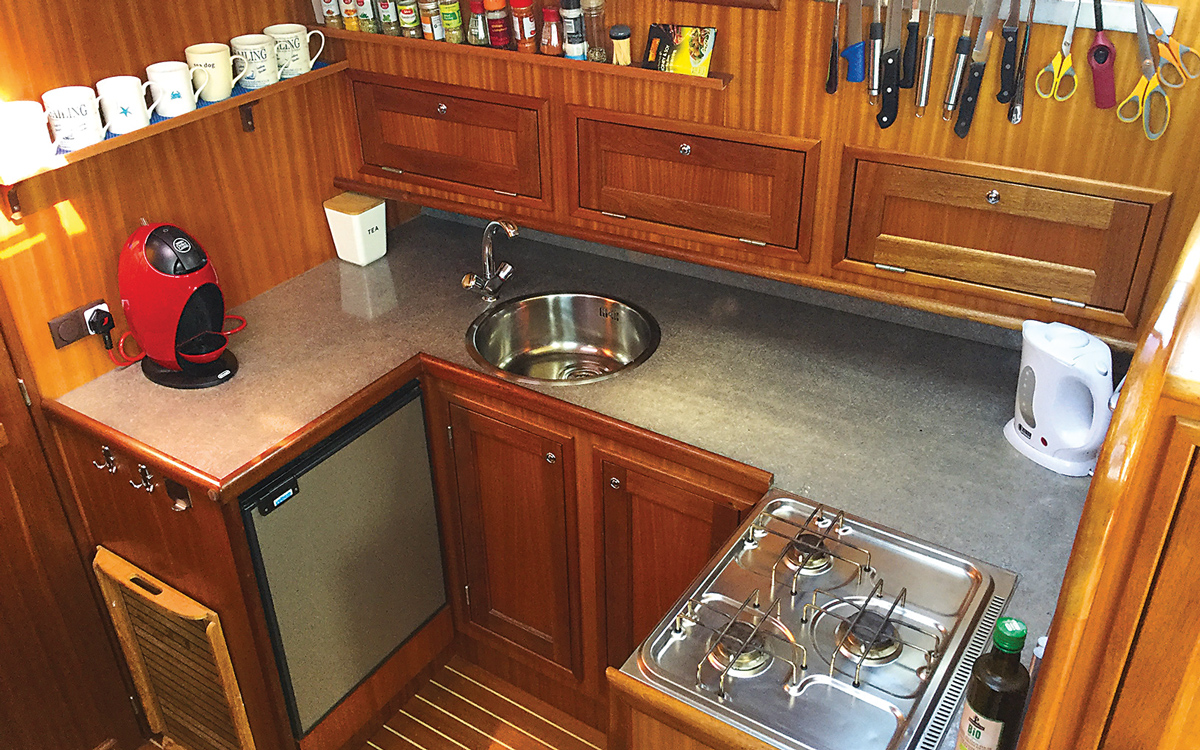
We spoke to the broker who showed us the first Babro – his professionalism persuaded us he was the man to work with. We took his advice on every aspect of the sale and one week later the Dufour was sold at the price we felt she was worth.
The broker also advised us on all the paperwork needed to buy and sell – something we were never asked for when selling a previous boat in England. In fact he told us he could not even take our boat on his books without the CE builder’s certificate. Thankfully, we had everything we needed for the Dufour and a full lift-out survey and test sail later, we were without a boat but with cash to spend. It was time to start looking seriously.
Finding the one
We travelled the length and breadth of Holland comparing marques, specs and whether it felt right. Some just didn’t. To cut a long story short, we ended up buying a Marhen 1160AK built in 2007. It had a big saloon, an aft cabin and cockpit, just 700 hours on the engine, a single helm position and an air draught of 2.65m with the canopies folded. But, no second heads.

The switch from sail to power went so well they are already considering trading up to a bigger motorboat
It was registered in Belgium but based in Holland and we couldn’t see the CE certificate in all the manuals and paperwork held on board. Our original broker came to the rescue, advising us that the paperwork was in order. His advice was invaluable and his English impeccable – another benefit of buying and selling in Holland.
We bought her in September and spent the next six months making her our boat. The forecabin was very big so we took out part of the starboard vee berth and put in a second heads.
It still left room for a 4ft 6in double bed on the diagonal. We also built extra seats/storage boxes across the stern of the cockpit as, like many of the motor boats we looked at, stowage space was limited. Lastly, we had a stern thruster fitted and an autopilot. By May 2019 we were ready to go.

The sheltered outdoor helm position works well in all weathers
Seasons greetings
Four weeks into the season we had covered a lot of the south of Holland, only having to wait for three bridges to open. We explored the tiny canals of the Biesbosch – a beautiful national park where all you can hear is a cuckoo calling – and took the scenic route wherever we could to avoid the big canals with commercial barges.
It took us a while to get a hang of manoeuvring her in and out of berths, due to the increased windage of a motorboat, and we probably woke up a few of the sleepy harbours we ventured into with the frantic whirring of our thrusters. But as the season progressed, we got used to handling Chipper Too and learnt how to berth her using the engine and wheel alone wherever possible.
As members of the Cruising Association, we have used their app, Captain’s Mate, wherever we have gone. It’s like Trip Advisor for the water with reports written by members on depths, air draughts, where to find fuel, laundrettes and even the nearest Lidl to stock up on wine!
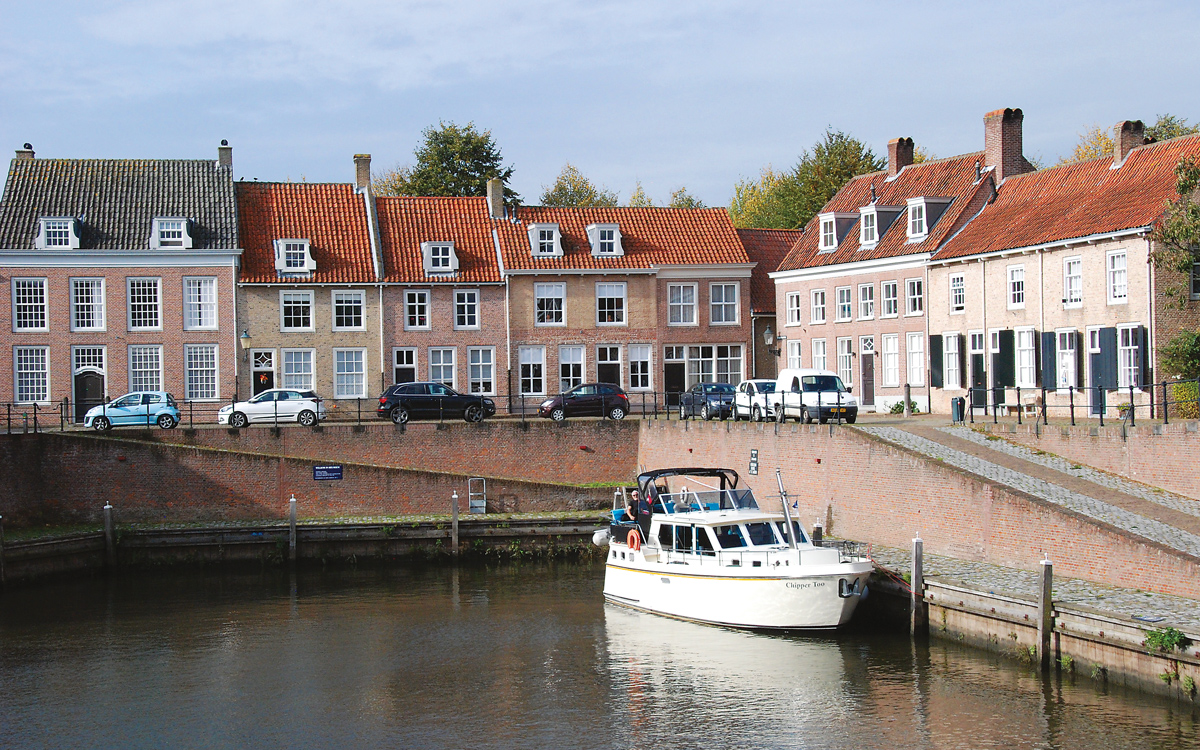
The highlight of our season was taking the boat to Maastricht to see an Andre Rieu concert and then back to Dordrecht the following weekend for a music festival. It was the perfect summer and we never even had to think about the weather.
In total we covered more than 750 miles and are still discovering more tiny harbours to enjoy with the intention to explore further into Europe when the current coronavirus boating restrictions are lifted.
One of the many benefits we’ve discovered about motor boating is the peace and peace of mind that comes with it. Engine noise is negligible – you don’t have to raise your voice to be heard, even down below. Nor are there any tides or strong winds to worry about on the inland waterways. While sailing across open water on a beautiful day with a Force 4 is hard to beat, those days are few and far between.

Simon prepares to lower the folding steel mast
Handling a motor cruiser really is very simple – especially with bow and stern thrusters to fall back on. Even when we lost steerage due to a hydraulic leak in the system we simply used the thrusters to move onto a small jetty on the canal side.
And what of the comparative cost of running a motor boat rather than a yacht? Despite the more powerful engine – a 114hp Vetus rather than the Dufour’s 40hp Volvo – we haven’t spent a lot more on fuel. Running the engine at 1100rpm for a cruising speed of 6-8 knots uses 5.3 litres an hour.
We probably spend around twice as much on fuel as we did with the Dufour but much less on mooring fees as we can now stop at the side of canals, using a ‘dog tether’ to tie mooring warps to. Crucially, we have also used the motor cruiser much more than we did the sailing boat because the weather really doesn’t matter, so mile for mile, we spend less.

We have crawled up tiny canals, used our folding bikes to explore further inland and the dog has given a firm paws-up to motor boating.
Power vs. sail
The different systems on the motor cruiser are a little daunting at first. There are no less than 14 seacocks on ours (three sinks, a shower, the shaft cooling system as well as the usual engine and generator ones). There are also several fuel feeds, not just to the engine but also the generator and heating system.
The electronics are virtually the same – a chartplotter and VHF with built-in AIS may not be essential on the inland waterways but they do take the angst out of moving around busy commercial canals where the large barges come up surprisingly fast behind you. AIS overlaid on the plotter gives you real peace of mind.

Above all, it’s the comfort of a motor boat that we really enjoy. There is so much space: a large saloon with a gently curving staircase from the cockpit, a spacious U-shaped galley, a generous dinette with a big aft cabin with a proper island double bed.
The fact that we have covered more than ten times the distance in one season than we ever did on a sailing boat, says it all. We’re hooked. So much so, our Marhen is now up for sale to be replaced by a slightly bigger one so that all the family can join us next time!
First published in the June 2020 edition of Motor Boat & Yachting.

Even tall bridges would have been a problem in their previous sailing boat

The Marhen is low and narrow enough to squeeze through tight spots



